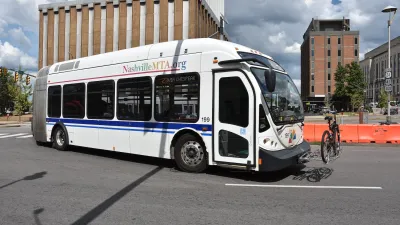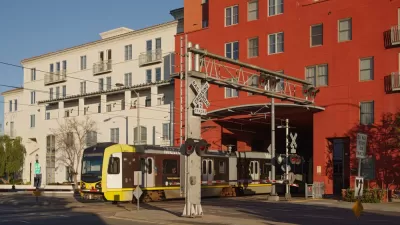Keeping transit planning and development siloed can limit opportunities to build affordable housing and vibrant neighborhoods.

In an op-ed in Next City, Shonda Wang outlines the lessons that U.S. planners can draw from cities like Tokyo and Toronto when it comes to transit-oriented development (TOD).
By limiting solutions to what we traditionally understand as TOD, we restrict our ability to foster complete communities. Here in North America, leveraging the air rights of future and existing transit stations can unlock opportunities to deliver more housing and community infrastructure, offset development costs and attract key partners.
Wang describes three key factors that make Tokyo’s TOD successful: a single agency that manages developments; a streamlined approach to permitting; and an understanding of the time-to-value factor, meaning that integrated development should be considered in early infrastructure and urban design plans.
Wang also highlights the importance of the transit experience. “We need to think about transit stations not as single-use entities, but as opportunities to create bustling places that make commuters feel good as they walk in, out of and through them.”
Wang adds, “Just think of the massive opportunities if we act beyond the bounds of our disciplines to advance our transportation goals, accelerate the development of low-carbon buildings and build community resilience.”
FULL STORY: What Cities Can Learn From How Tokyo and Toronto Approach Transit-Oriented Development

Trump Administration Could Effectively End Housing Voucher Program
Federal officials are eyeing major cuts to the Section 8 program that helps millions of low-income households pay rent.

Planetizen Federal Action Tracker
A weekly monitor of how Trump’s orders and actions are impacting planners and planning in America.

Ken Jennings Launches Transit Web Series
The Jeopardy champ wants you to ride public transit.

Washington Legislature Passes Rent Increase Cap
A bill that caps rent increases at 7 percent plus inflation is headed to the governor’s desk.

From Planning to Action: How LA County Is Rethinking Climate Resilience
Chief Sustainability Officer Rita Kampalath outlines the County’s shift from planning to implementation in its climate resilience efforts, emphasizing cross-departmental coordination, updated recovery strategies, and the need for flexible funding.

New Mexico Aging Department Commits to Helping Seniors Age ‘In Place’ and ‘Autonomously’ in New Draft Plan
As New Mexico’s population of seniors continues to grow, the state’s aging department is proposing expanded initiatives to help seniors maintain their autonomy while also supporting family caregivers.
Urban Design for Planners 1: Software Tools
This six-course series explores essential urban design concepts using open source software and equips planners with the tools they need to participate fully in the urban design process.
Planning for Universal Design
Learn the tools for implementing Universal Design in planning regulations.
Heyer Gruel & Associates PA
Ada County Highway District
Institute for Housing and Urban Development Studies (IHS)
City of Grandview
Harvard GSD Executive Education
Toledo-Lucas County Plan Commissions
Salt Lake City
NYU Wagner Graduate School of Public Service





























